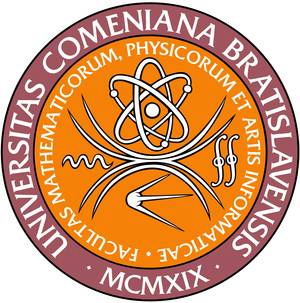|
Abstrakt: Comparison of three plasma-activated water systems on the growth
and germination of Lactuca sativa L. plants
R. Mehrabifard1, A. Mišúthová1, Z. Machala1
1Division of Environmental Physics, Faculty of Mathematics, Physics and Informatics,
Comenius University, Mlynská dolina, 842 48 Bratislava, Slovakia,
adriana.misuthova@fmph.uniba.sk
The increasing global population underscores the urgent need for sustainable food
production. Contemporary agricultural practices depend heavily on commercial fertilizers,
with nitrogen serving as an essential nutrient for plant growth [1]. Cold plasma generates
reactive oxygen and nitrogen species (RONS), which dissolve in water to form plasmaactivated water (PAW). PAW has shown considerable potential in agricultural
applications, as the prolonged bioavailability of RONS may act as signaling molecules in
plant metabolism or contribute to nutrient supply [2]. This study investigates the effects
of PAW produced by three different non-thermal plasma systems—transient spark (TS),
fountain dielectric barrier discharge (FDBD), and microwave plasma (MWP)—on the
growth and development of lettuce (Lactuca sativa L.) plants and seeds. Plants were
grown in the soil and irrigated with PAWs for five weeks. The amount of applied PAW
increased with the developmental stage of the plants. The impact of PAW was evaluated
by assessing germination rate, shoot and root length, fresh and dry biomass, number of
leaves, and photosynthetic pigment concentration one month after sowing. In addition,
germination performance was analyzed using a germination paper test over eight days,
including measurements of germination percentage, mean germination rate, seed vigor
index, and fitting of the Richards function. The results indicate that each PAW exerts
distinct effects on physiological parameters, largely depending on its specific chemical
composition. Overall, PAW treatments significantly enhanced biomass accumulation,
reflected in increased leaf number and length, as well as higher fresh and dry weight.
Although no notable improvement in germination rate was observed, all PAW treatments
positively influenced seed vigor, highlighting their potential in improving early seedling
performance.
Keywords: dielectric barrier discharge, Lactuca sativa, physiological parameters, plasmaactivated water, transient spark.
Acknowledgements: The research was supported by the EU NextGenerationEU through
the Recovery and Resilience Plan for Slovakia under the project No. 09I03-03-V03-00033
EnvAdwice and the Slovak Research and Development Agency APVV-22-0247.
[1] A. Sharma, R. Chetani IJESRT 5, (2017), 2, 677–680
[2] R. Thirumdas, A. Kothakota, U. Annapure, K. Siliveru, R. Blundell, R. Gatt, V.P.
Valdramidis, Trends. Food. Sci. Technol. 77, (2018), 21–31
|

